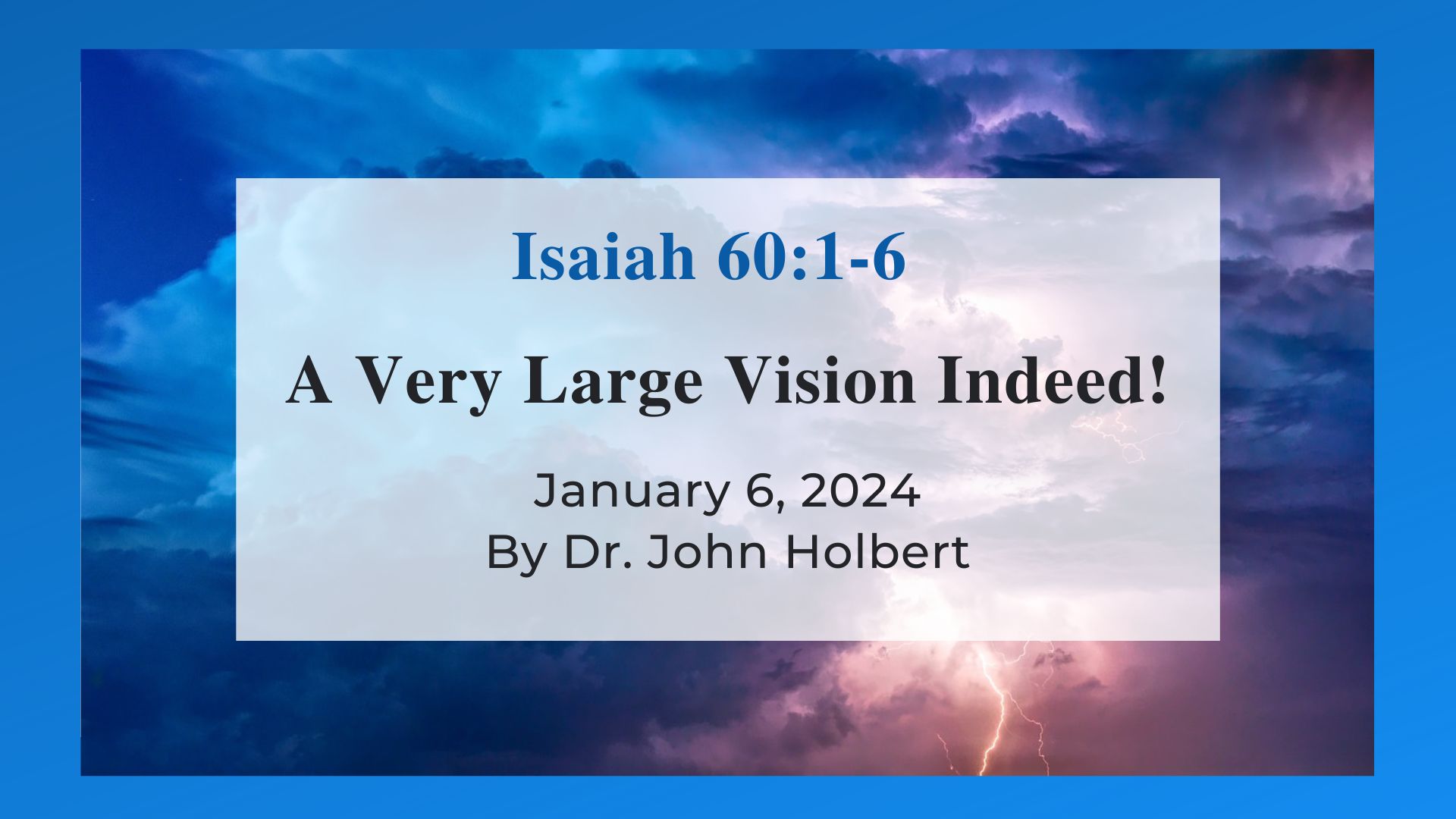A Very Large Vision Indeed! - Reflections on Isaiah 60:1-6
by Dr. John Holbert on Tuesday, January 2, 2024

A Very Large Vision Indeed!
Isaiah 60:1-6
The Peripatetic Hebrew Bible Preacher
The Sunday of Epiphany remembers and celebrates the appearance of Jesus in the world. It is the 12th day of Christmas (please do not sing that interminable song!), and in many of the world’s Christian places serves as a day of genuine fun, with presents in shoes and festive foods. Nearly two weeks after we US Christians have packed away the tinsel for another year, international siblings are still in the mood. In the UK this often means the “Christmas pud,” the less said about, the better. Still, on the 12th day of Christmas, Jesus is well into our world, according to Matthew the wise men from the east have shown up with their fabled gifts, and Herod is about to go on his paranoid rampage against the supposed “king of the Jews.”
It is not always clear just how these now-familiar celebrations came about. We know that Easter was the church’s very first required celebration, but whether Christmas and its accompanying days soon followed is problematic; after all, both the gospels of Mark and John say nothing about the birth of Jesus at all, though John does connect his coming philosophically with the appearance of Lady Wisdom, as seen in the biblical book of Proverbs and other apocryphal texts. But in Mark, Jesus is already an adult when he first shows up at the river Jordan. But Matthew, as always enamored with the Hebrew Bible, neatly borrows several images from Is.60 to flesh out his memorable tale of the birth and appearance of Jesus in his second chapter.
In Is.60 there are multiple references to “light” out of darkness: “Arise, shine, for your light has come,” he begins and continues by describing earth and its people covered with “thick darkness,” but enlightened by “the Lord,” and the “Lord’s glory.” And this great light will be a beacon for the nations, represented by their kings who will “come to the brightness of your dawn.” One can readily see how Matthew would have employed that wonderful star, the directional guide for the wise men, a strange star too bright for any normal star, to bring the men to the place of the child’s birth. With Jesus, according to Matthew, all is light, all is bright, and his coming is marked by illumination in a dark world. All that comes from Is.60:1-3.
And then there is Is.60:4-6. Not only will Jesus’ appearance be characterized as suffused with light, but also people who have been exiled from their homes will return due to his coming. “They will gather together…your sons will come from far away, and your daughters will be carried in their nurses’ arms” (Is.60:4). Though the Isaiah passage was surely composed well after the Babylonian exile of the 6th century BCE, the memory of that wrenching event was certainly fresh in the minds of Israelites, whether they remained in Babylon or had returned to a greatly diminished homeland. The hopes of a “return” to Jerusalem remained ever-renewed for the people of YHWH, and Matthew, especially at the very end of his gospel, imagines that in Jesus “all the earth” will be made whole and new (Matt.28).
And finally, in the coming of Jesus, Matthew envisions a radical redistribution of the world’s wealth and riches. “The abundance of the sea shall be brought to you, and the wealth of the nations shall come to you. Vast herds of camels will cover your land, young camels of Midian and Ephah, along with all those from Sheba. They shall bring gold and frankincense, and proclaim the praise of YHWH” (Is.60:5-6). For Matthew, Jesus will rewrite the very economies of the nations. The rich will bring their treasures in honor, most particularly their gold—the universal symbol of wealth—and frankincense, unguents from strange and distant lands, prized by the select few. Though Matthew does not speak of camels, those near-magical beasts of burden, who with their ability to avoid drinking for up to seven days, transformed the trade practices of the Middle East when they were first domesticated at least a millennium prior to the birth of Jesus, any person’s wealth would by necessity include herds of camels. Why else are those wise men pictured always perched on camels?
Thus, the Epiphany of Jesus, according to Matthew, is characterized by light, the rebirth of community, and wealth available to all. Each of these facets of Epiphany Matthew found in Is.60, is truly a wellspring of the multiple ideas of the meaning of the appearance of Jesus in the world. Those world celebrations of this singular event in Christian history owe their continued resonance to the rich passage, Is.60, without which Matthew would not have written as he did, and our Nativity pageants would have looked very different indeed.
